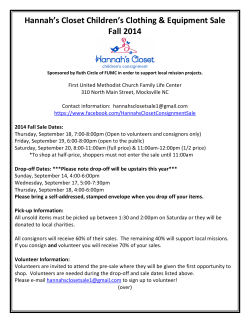
Hoof abscesses are one of the most common causes of
ve t eri nary charl ie c art er M o s s Va l e Hoof abscesses in horses Hoof abscesses are one of the most common causes of acute lameness in horses. Due to the high rainfall present in the Southern Highlands, particularly in the past six months, we commonly encounter hoof abscesses in horses. A hoof abscess occurs when micro-organisms (namely bacteria) gain access to the hoof. This can occur following: 1. a crack forming in the hoof wall 2. separation of the hoof wall and sole junction known as the white line (see diagram) 3. penetration of the hoof with a sharp object. allow bacteria to enter the hoof via small cracks in the hoof wall. These hoof cracks are particularly prevalent in horses which have overgrown hooves. Clinical signs Hoof abscesses are very painful. Affected horses will be reluctant to weight bear on the affected hoof. There can be considerably swelling above the hoof and around the pastern. In severe cases the horse may be non-weight bearing, and swelling may extend further up the leg. Often the affected foot will be warm to touch. Pain can be localised with hoof testers but the condition should not be confused with other causes of lameness, including laminitis. It is not unheard of for more than one hoof to be affected. Treatment Image obtained from www.miniaturesforu.com Hoof abscesses are less likely to occur in hooves with a solid hoof wall and sole junction (white line). Treatment involves locating and draining the offending area of infection. The bacteria involved are usually anaerobic and hence they like an environment without oxygen. Drainage allows oxygen into the affected area, and is imperative for a full recovery. Once drainage is established a poultice dressing is applied. Antibiotics (normally penicillin) are also indicated. Occasionally the abscess can’t be located and so a poultice dressing is applied and the hoof is rechecked in two to three days. It is important to note that it is not advisable to give antibiotics prior to draining the abscess. In the majority of cases the antibiotics will only suppress the abscess and increase the time it takes to “break out.” As stated previously, hoof abscesses are painful so pain relief is also advisable. Phenylbutazone (a non steroidal anti-inflammatory drug or NSAID) provides effective pain relief, and should be continued for four to five days. A hoof abscess can also allow tetanus to develop. If your horse is not up to date with its tetanus toxoid injections (Equivac T), a tetanus antitoxin should be given (Equivac TAT). This provides short-term, three -week protection against tetanus whilst the abscess is resolving. Prevention Factors that will lead to a weakening of the white line include: 1. poor hoof conformation such as excessive toe length or heels that are high 2. excessive removal of the sole 3. hoof diseases such as laminitis (founder) or the common sequellae “seedy toe” 4. excessive moisture. The best prevention involves proper hoof care for your horse. In particular, excessive toe length can lead to hoof cracks and weakening of the white line, and this can lead to formation of a hoof abscess. A farrier should attend to your horse’s hooves every six weeks. Thoroughbreds and thoroughbred-cross horses are commonly used as pleasure horses, and many have below par hoof conformation. If your horse has a history of hoof problems, visits may need to be more frequent. The most common cause of a hoof abscess that we encounter is excessive moisture following periods of rain. Wet conditions Charlie is a partner in Beresford Carter veterinary Clinic, Moss Vale, contact 4868 1310 Princesses, Sirs, Squires, Courtiers and even a Dragon! WHAT A KNIGHT is SHYAC's junior production for 2011. It is the tale of King Arthur, his crazy family and court plus the Knights of the Round Table - but not as you've ever seen them before... Show Times Friday June 10th, 7.00pm Saturday June 11th, 7.00pm Sunday June 12th, 2.00pm Saturday June 18th, 2.00pm & 7.00pm Sunday June 19th, 2.00pm At the Mittagong Playhouse Tickets available at www.shyac.org.au May 2011 41
© Copyright 2025











